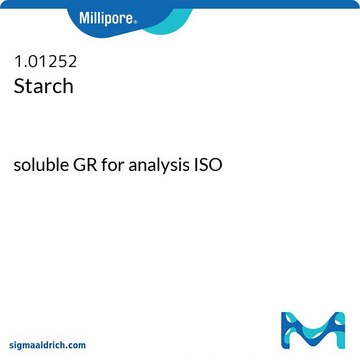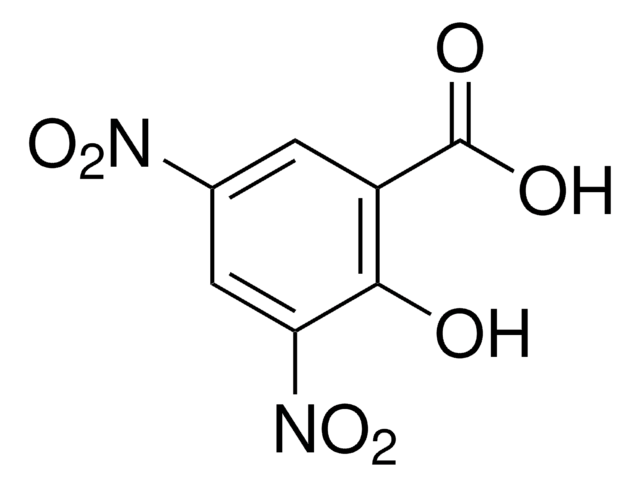S2004
Starch from potato
Soluble
Se connecterpour consulter vos tarifs contractuels et ceux de votre entreprise/organisme
About This Item
Formule linéaire :
(C6H10O5)n
CAS Number:
Numéro CE :
Numéro MDL:
Code UNSPSC :
12352201
ID de substance PubChem :
Nomenclature NACRES :
NA.21
Produits recommandés
Source biologique
potato
Niveau de qualité
Forme
powder
Couleur
white
Plage de pH utile
5.0-7.5 (2% in water)
Température de stockage
room temp
Vous recherchez des produits similaires ? Visite Guide de comparaison des produits
Description générale
Starch is a carbohydrate reserve in plants and a major source of energy for humans. In plants, starch is found in chloroplasts of leaf and in the amyloplasts of tuber and seeds. Structurally, starch consists of two major polysaccharides, namely amylose and amylopectin. Both consists of chains of -(1,4)-linked D-glucose residues interconnected through -(1,6)-glycosidic linkages. Potato starch is superior to others, functionally, because of its low lipid level. Nutritional composition of starch comprises of rapidly digestible starch, slowly digestible starch, and resistant starch (RS). Amylases are the starch degrading enzymes. Starch digestibility affects the blood glucose levels and is controlled by factors like carbohydrate contents of foods, nutritional composition of starch and cooking foods. Inhibition of pancreatic amylase is of therapeutic importance for delaying starch digestion, to prevent postprandial hyperglycemia. Food industries use starch as thickening agent.
Application
Starch from potato has been used as a substrate for α-amylase inhibition assay, by use of raw and cooked food samples and aerial parts of Trichosanthes cucumerina Linn, as a substrate to determine SusG activity, in animal gut microbiota activity using DNSA assay.
Autres remarques
To gain a comprehensive understanding of our extensive range of Polysaccharides for your research, we encourage you to visit our Carbohydrates Category page.
Code de la classe de stockage
11 - Combustible Solids
Classe de danger pour l'eau (WGK)
nwg
Point d'éclair (°F)
Not applicable
Point d'éclair (°C)
Not applicable
Faites votre choix parmi les versions les plus récentes :
Déjà en possession de ce produit ?
Retrouvez la documentation relative aux produits que vous avez récemment achetés dans la Bibliothèque de documents.
Les clients ont également consulté
Notre équipe de scientifiques dispose d'une expérience dans tous les secteurs de la recherche, notamment en sciences de la vie, science des matériaux, synthèse chimique, chromatographie, analyse et dans de nombreux autres domaines..
Contacter notre Service technique



